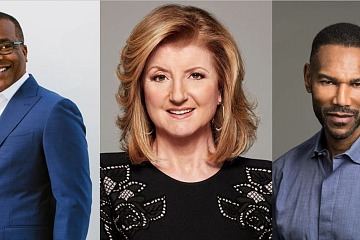Employee Experience, Onboarding, Recruiting
There are few things more important to an organization’s success than hiring well, which is why so many companies today focus extensively on the hiring process. To understand how other companies approach the process, we wanted to share some best practices gleaned from Great Place To Work clients. While these practices might not be right for every organization, they should help you think about your current program and what you could be doing differently to ensure you’re attracting the best hires and conducting the most productive interview process.
One: Make the Interview Process Both Fun and Informational
Many companies today are thinking beyond the traditional office interview, which tends to feel formal and forced. At Deloitte, a global professional services firm headquartered in New York, there are a number of recruitment and pre-hiring activities that take place to ensure that candidates have a full picture of who Deloitte is and what they may be joining. One event is the pre-interview reception, which allows prospective candidates to meet their interviewers in a relaxed setting before the actual interview.
For Salesforce, a cloud computing company based in California, networking events have proven to be an effective mode of seeking out candidates in the sales arena. For these important functions, the Recruiting team brings in the "A" players from the Sales team to mingle with candidates and talk to them about the salesforce.com experience. The events offer an opportune atmosphere for all parties involved. The candidate is given a firsthand glimpse into the corporate culture, and business managers are able to get to know candidates better on both a professional and social level.
Two: Don’t Let Great Prospects Go, Even If They’re Not Right for Your Position
During the interview process at Wegmans, a grocery retailer headquartered in New York, hiring managers use a specific selection guide to assess whether or not the candidate matches the culture and to evaluate their skills and interests for a position they are seeking. Through discovery of the candidate's talents, managers may redirect the candidate to other roles they haven't considered for which they have transferable skills and passion. The desired outcome of the first interview is for both the candidate and Wegmans to have better familiarity and appreciation for each other. If the candidate is a good cultural fit for the organization, managers work to keep them involved in the process, even if they do not have the skills required for the position to which they first applied.
Three: Interview for Behaviors that Matter
At Baptist Health, a healthcare group in Florida, behavioral profiles are used when hiring new candidates for specific positions. The profiles establish behavioral qualities that help the interviewers to determine fit into the Baptist Health culture, while assuring that they have the qualities necessary to be successful on the job. Additionally, interview guides are created using the profiles in order to further tailor the hiring process to the behavioral qualities and ensure continuity across interviewers. To further develop their selection process, Baptist Health has implemented evidence-based selection training. The interview process is standardized with interview guides including behaviorally based, competency based and realistic job preview questions. Leaders are trained in effective employee selection techniques and view video vignettes during live training sessions. This approach creates a consistent and effective method to educate hiring leaders. This decreases subjectivity in hiring and double the validity of the selection process to predict a high performing hire.
Atlantic Health System, a non-profit health care system in New Jersey, also uses a behavioral interviewing tool to enable managers to hire the best employees. Using behavior-based questions that are linked to organizational values and performance standards, hiring managers can discover how a candidate has handled specific employment related situations. The tool helps ensure that prospective employees are a good fit for the culture and organization.
Four: Get Personal
A "Key Influencer visit" is one of the most unique parts of the hiring process at David Weekley Homes, a home building company in Houston, Texas. At this meeting, hiring managers get to meet the family, and sometimes friends of the candidates, and really get to know the applicant on a personal level. David Weekley Homes conducts Key Influencer Visits with the top candidate for each position at the end of the hiring process. A Key Influencer can be a spouse, significant other, best friend, parent or sibling. The candidate can select where this visit takes place, but they are often done in the candidate’s home. A big part of the company culture is recognizing that team members have a life outside of work. They have spouses, children, pets and hobbies. The Key Influencer visits are another way to acknowledge that candidates are people too. It's a personal touch that the hiring manager uses to show the candidate their level of interest and to build a relationship with the candidate and the candidate's family right from the start.
Five: Get Creative
Kimpton Hotels & Restaurants, a hospitality group in San Francisco, frequently conduct group interviews as part of their hiring process. These interviews consist of two or three candidates pooled with a Kimpton manager. Often in these situations, candidates are given a bag of objects. They are asked to take out the bag's items, which include various items, such as a hairbrush, super glue, a shoelace, a ruler, a stapler and lipstick. They then are asked to do some impromptu storytelling, incorporating the varied objects. This process helps evaluate creativity, the ability to think on one's feet, and the ease with which they might interact with coworkers.












